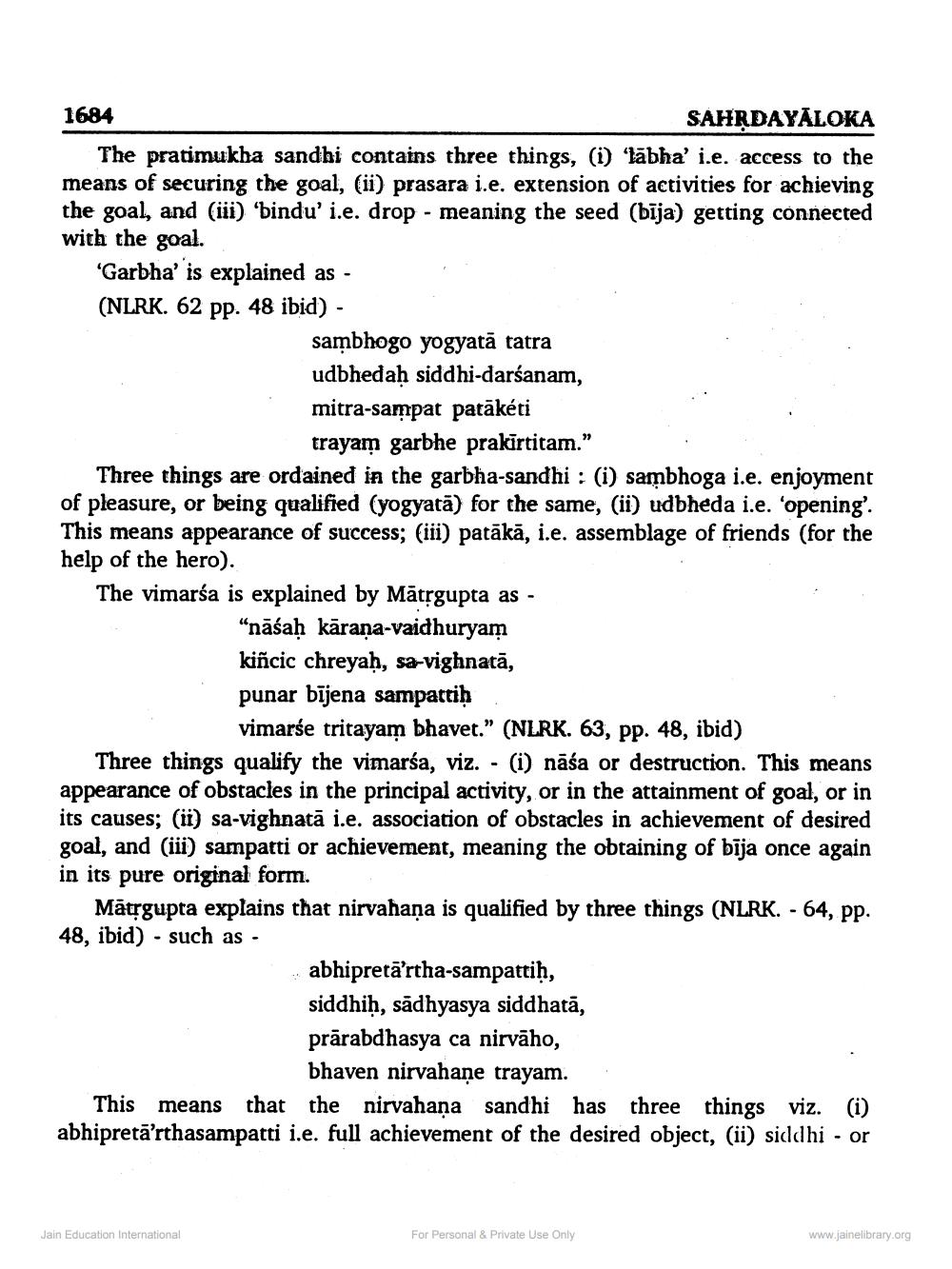________________
1684
SAHRDAYALOKA The pratimukha sandhi contains three things, (i) 'labha' i.e. access to the means of securing the goal, (ii) prasara i.e. extension of activities for achieving the goal, and (iii) 'bindu' i.e. drop - meaning the seed (bīja) getting connected with the goal.
'Garbha' is explained as - (NLRK. 62 pp. 48 ibid) -
sambhogo yogyatā tatra udbhedaḥ siddhi-darśanam, mitra-sampat patākéti
trayam garbhe prakirtitam." Three things are ordained in the garbha-sandhi : (i) sambhoga i.e. enjoyment of pleasure, or being qualified (yogyatā) for the same, (ii) udbheda i.e. 'opening? This means appearance of success; (iii) patākā, i.e. assemblage of friends (for the help of the hero). The vimarśa is explained by Mātsgupta as -
"nāśaḥ kārana-vaidhuryam kiñcic chreyaḥ, sa-vighnatā, punar bījena sampartih
vimarse tritayam bhavet.” (NLRK. 63, pp. 48, ibid) Three things qualify the vimarśa, viz. - (i) nāśa or destruction. This means appearance of obstacles in the principal activity, or in the attainment of goal, or in its causes; (ii) sa-vighnatā i.e. association of obstacles in achievement of desired goal, and (iii) sampatti or achievement, meaning the obtaining of bija once again in its pure original form.
Mātrgupta explains that nirvahaņa is qualified by three things (NLRK. - 64, pp. 48, ibid) - such as -
abhipretā’rtha-sampattiḥ, siddhiḥ, sadhyasya siddhatā, prārabdhasya ca nirvāho,
bhaven nirvahane trayam. This means that the nirvahana sandhi has three things viz. (i) abhipretā'rthasampatti i.e. full achievement of the desired object, (ii) siddhi - or
Jain Education International
For Personal & Private Use Only
www.jainelibrary.org




